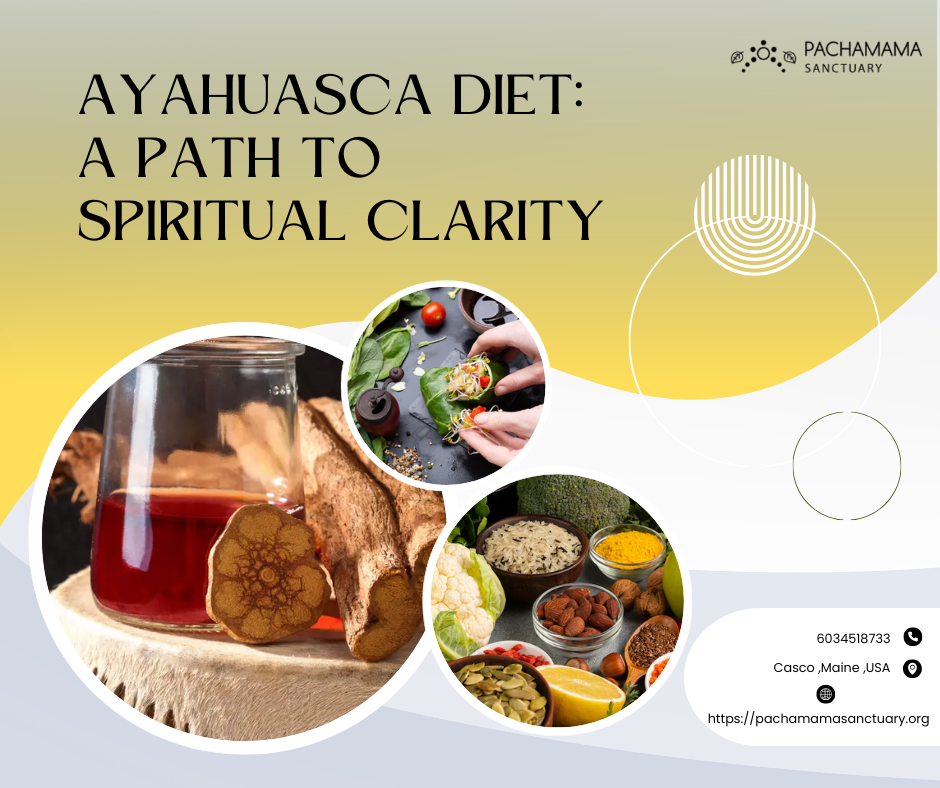
Participating in an Ayahuasca ceremony is a profound journey that intertwines physical, mental, and spiritual dimensions. A crucial aspect of this preparation is adhering to a specific diet, known as the Ayahuasca ceremony diet or ayahuasca diet preparation. This dietary regimen is not merely a set of arbitrary restrictions but serves to enhance the overall experience, ensuring safety and deepening the connection with the medicine.
Understanding Ayahuasca and Its Cultural Significance
Ayahuasca is a traditional Amazonian brew made from the Banisteriopsis caapi vine and the Psychotria viridis leaf. Historically, indigenous tribes have used Ayahuasca for healing, spiritual exploration, and community bonding. The ceremonial use of Ayahuasca is deeply rooted in the cultural and spiritual practices of these communities, often led by experienced shamans who guide participants through their journeys.
The Importance of the Ayahuasca Ceremony Diet
The Ayahuasca diet, or “dieta,” is integral to the ceremonial process. It involves specific dietary and behavioral guidelines designed to prepare individuals physically and spiritually for the experience. Adhering to this diet is believed to:
-
Enhance Sensitivity to the Medicine: Certain foods can interfere with the body’s receptivity to Ayahuasca. By eliminating these substances, participants may experience a more profound connection with the medicine.
-
Ensure Physical Safety: Ayahuasca contains monoamine oxidase inhibitors (MAOIs), which can interact adversely with specific foods, particularly those high in tyramine. Consuming such foods can lead to hypertensive crises. The diet minimizes this risk by restricting these items.
-
Promote Mental Clarity: Abstaining from stimulants like caffeine and sugar helps in achieving a clearer mental state, facilitating deeper introspection during the ceremony.
-
Align Spiritually: The diet is also a form of spiritual preparation, signaling commitment and respect for the process. It helps in purifying the body and mind, making one more receptive to the spiritual teachings of Ayahuasca.
Typical Guidelines for Ayahuasca Diet Preparation
While specific guidelines can vary among practitioners and retreat centers, common recommendations include:
-
Abstain from Red Meat: Red meats are often avoided due to their heavy and complex nature, which can interfere with the body’s ability to process Ayahuasca effectively.
-
Avoid Spicy and Fermented Foods: These can disrupt the digestive system and may contain high levels of tyramine, posing risks when combined with MAOIs.
-
Eliminate Alcohol and Drugs: Substances that alter consciousness can interfere with the Ayahuasca experience and may lead to adverse reactions.
-
Limit Salt and Sugar Intake: Reducing these helps in maintaining a balanced internal environment, promoting better receptivity to the medicine.
-
Practice Sexual Abstinence: Abstaining from sexual activity is believed to conserve vital energies, aiding in deeper spiritual work.
Pachamama Sanctuary’s Approach to the Ayahuasca Diet
At Pachamama Sanctuary, a leading Ayahuasca retreat center in the USA, the importance of diet in Ayahuasca ceremonies is deeply acknowledged. The sanctuary emphasizes a holistic approach, integrating physical, mental, and spiritual preparation to ensure a transformative experience.
Physical Preparation
Participants are encouraged to follow a specific dietary regimen before attending the retreat. This includes:
-
Adopting a Vegan Diet: Meals provided during the retreat are vegan, with the exception of honey in oatmeal. This aligns with the principles of lightness and purity, facilitating a smoother Ayahuasca journey.
-
Avoiding Certain Foods: Participants are advised to abstain from spicy foods, red meat, and other items that could interfere with the medicine’s effectiveness.
Spiritual Preparation
Beyond the physical aspects, Pachamama Sanctuary places significant emphasis on spiritual readiness. This involves:
-
Mindfulness Practices: Engaging in meditation and reflection to cultivate a receptive mental state.
-
Setting Intentions: Encouraging participants to contemplate their goals and aspirations for the ceremony, fostering a purposeful approach to the experience.
The Role of Diet in Enhancing the Ayahuasca Experience
Adhering to the Ayahuasca diet is more than a preparatory step; it profoundly influences the quality and depth of the experience:
-
Deepened Spiritual Connection: A purified body is believed to facilitate a stronger connection with the spiritual realms accessed during the ceremony.
-
Emotional Stability: The diet helps in stabilizing emotions, allowing participants to navigate the often intense emotional landscapes encountered during the journey.
-
Physical Comfort: By consuming easily digestible foods, participants may experience fewer physical discomforts, enabling them to focus more on the spiritual aspects of the ceremony.
Post-Ceremony Considerations
The importance of diet extends beyond the ceremony itself. Post-ceremony, maintaining certain dietary practices can aid in the integration process:
-
Continued Abstinence from Certain Foods: Gradually reintroducing restricted foods helps in maintaining the energetic balance achieved during the ceremony.
-
Hydration and Nourishment: Emphasizing hydration and consuming nourishing, light meals supports the body’s recovery and integration of insights gained.
Conclusion
The Ayahuasca ceremony diet is a cornerstone of the preparation process, intricately linked to the safety, effectiveness, and profundity of the experience. By adhering to these dietary guidelines, participants honor the tradition, safeguard their well-being, and open themselves to the transformative potential of Ayahuasca. At Pachamama Sanctuary, these principles are deeply integrated into the retreat experience, ensuring that individuals embark on their spiritual journeys